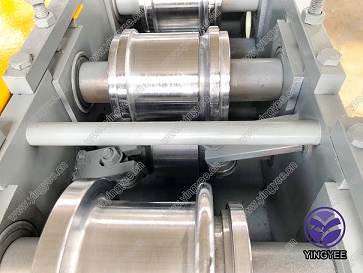
Understanding Cold Bending Prices A Comprehensive Analysis
Cold bending is a crucial manufacturing technique used primarily in the construction and manufacturing industries to shape metal products without the application of heat. This method involves bending materials at room temperature, which not only maintains the integrity of the metal but also enhances its yield strength. With the increasing demand for structurally sound materials, cold bending has gained prominence as a reliable choice for producing beams, pipes, and various structural components. However, one of the critical considerations for businesses and contractors is the price of cold bending services and materials.
Factors Influencing Cold Bending Prices
1. Material Type and Quality The type of material being bent significantly impacts the price. Commonly used metals include steel, aluminum, and copper, each varying in price based on their market demand, quality, and availability. High-strength steel, for instance, may cost more due to its superior properties compared to standard mild steel. Additionally, specialized alloys or treated materials will also command a premium due to their specific characteristics and processing requirements.
2. Thickness and Size of the Material The dimensions of the material play an essential role in determining the price. Thicker and larger materials require more robust machinery and longer processing times, which can increase costs. Manufacturers often need to adjust their equipment to handle varying sizes, leading to additional setup fees.
3. Complexity of the Bend The intricacy of the bending process can significantly affect pricing. Simple bends may incur lower costs due to quicker processing times and less tooling, while complex shapes demand skilled labor, advanced machinery, and longer lead times. Custom setups for unique designs involve additional effort and resources, often resulting in higher prices.
4. Production Volume The quantity of materials being processed can also influence cold bending prices. Bulk orders typically benefit from economies of scale, reducing the cost per unit. However, for smaller quantities, the fixed costs of setup and tooling remain relatively high, making per-piece pricing less favorable. Companies need to carefully consider their order sizes to optimize costs.
5. Location and Transportation Costs The geographical location of both manufacturers and clients can affect pricing due to transportation expenses. Urban areas may have easier access to raw materials and skilled labor, potentially lowering costs. In contrast, remote locations may incur higher shipping fees, which can be passed onto customers. Additionally, local market conditions and labor prices will also influence overall costs.

6. Supplier and Market Conditions Like any commodity, the prices for cold bending services can fluctuate based on market demand and supplier conditions. During periods of economic growth, demand for construction materials often rises, causing prices to increase. Conversely, during economic downturns, prices may drop due to decreased demand. Suppliers' pricing models, whether based on fixed costs or market-driven adjustments, also play a critical role in shaping overall expenses.
The Importance of Accurate Pricing
For businesses involved in construction or manufacturing, understanding and managing cold bending costs is vital for maintaining profitability and competitiveness. Overestimating or underestimating costs can lead to budget overruns or diminished profit margins. Thus, companies should seek detailed quotes from multiple suppliers, ensuring they consider all the factors affecting price.
Additionally, transparency and communication with suppliers can help firms navigate pricing fluctuations. Establishing long-term relationships may result in better rates or preferential treatment, particularly for businesses that require repetitive services.
Conclusion
Cold bending is an essential process that contributes greatly to the structural integrity of a variety of products, but understanding the financial implications is critical. Prices are influenced by various factors, including material type, size, complexity, production volume, geographical considerations, and current market trends.
For businesses and contractors, keeping a close eye on these elements will allow them to make informed decisions that align with their budget and project needs. By investing time in understanding cold bending prices and fostering relationships with reliable suppliers, companies can optimize their operations and ensure they remain competitive in a continually evolving market.